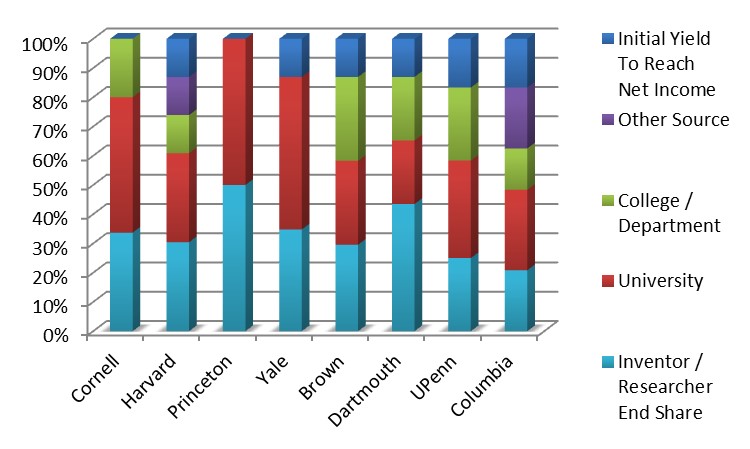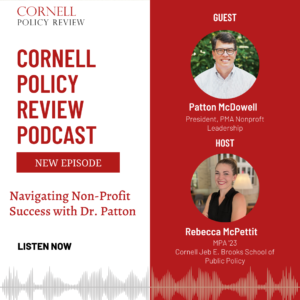From online education to for-profit universities to an increasingly disparate gap between graduates’ experience and qualifications, highly disruptive forces are affecting higher education across the globe. Objective analyses of these factors describe their impact as a natural progression of the industry. One area not frequently evaluated, and one which acts on and directly speaks to the core tenants of research in higher education, is that of intellectual property rights, patent policy, and revenue sharing. Current university policies regulating these issues are multi-faceted and do not appear to be providing the most beneficial result to educators or students; reviewing their intent and revisiting their structure will undoubtedly provide all parties with a more mutually beneficial outcome.
The generation of new scientific ideas, novel social theoretical concepts, pioneering engineering research, and fascinating entrepreneurial concepts are some of the most attractive reasons young minds choose a life in academia. Research of any kind is a necessity for the advancement of civilization, and top-tier research institutions are aware of its cultural benefits as well as the often-lucrative rewards of commercialization. In 1980, Congress passed the Bayh-Doyle Act, allowing universities and non-profit institutions to claim ownership of federally funded research-based inventions (instead of the government owning it outright). Since then, the number of firms created as a result of a specific product invention in the U.S. higher educational system has grown from under 250 firms to over 550 in only twenty years.[i] For researchers, what are the effects of such a sharp growth in invention, firm creation, and revenue generation? More specifically, do current policies governing these creations spur innovation and attract high-quality community members? It would be difficult to argue that the primary purpose of higher education institutions is anything other than attracting, educating, and graduating scholars and researchers to benefit society. Research policies should be structured to ensure the continued pursuit of this goal.
The eight Ivy League institutions are known for their research forte. Associated with the pinnacle of scholastic achievement, these institutions are classified as ‘very high research activity,’ the highest rating, by the Carnegie Classification of Institutions of Higher Education. However, in a recent article utilizing U.S. News reputation rankings, aggregated faculty reviews based on reported scores, and student to faculty ratios, only Harvard, Princeton, and Yale made it into the top 25 institutions with the most sought after and engaging faculty for student learning. While a school’s level of research activity may not initially seem linked to the relative engagement or reputation of its faculty, the relationship between these elements is worth examining with regards to patent policy.
All Ivy League universities have detailed patent / intellectual property rights policies in their bylaws. Some institutions have more loosely structured policy offices in an effort to provide a more flexible stream of communication on a case-by-case basis between the university and the ‘creator’ (the term most institutions use to describe the inventor or researcher). Others, including Cornell, have sizeable and highly structured departments specifically devoted to the area of intellectual property. Though the looser structure may provide a more tailored approach to patent policies, some would argue the highly sensitive, proprietary, and lucrative nature of inventions demand a larger, more departmentalized staffing model.
Ivy League patent revenue data can be broken down and visualized (see figure 1 for details). On the aggregate, most Ivy League institutions take a 17.5% administrative fee off the top of the return from the invention, with the remaining revenue then divided to certain parties based on the institution’s policy statement. The remaining total revenue and its breakdown is represented in Figure 1. This revenue is allocated to parties which can include a specific faculty member, department, university president, specific fund, etc. Schools will then reinvest 25% to 50% of the total revenue into the university’s financial system. A smaller reinvestment in the financial system usually correlates to a larger reinvestment in either the creator’s college or department. Harvard and Columbia place 15% to 25% of the remainder in a specific fund for the creator, only to be used for research within the university. These two institutions may choose this method in an effort to sustain the creator’s desire to continue that specific vein of research, or perhaps to prevent the dilution of capital (human and monetary) to other interests. Across the eight institutions, the average final payout of net invention-income to the creator is 37.2%. This percentage should be the ultimate focus of policy makers. As the “take-home” for the creator, it affects the efficacy of the instructor to cater to the quality of students’ education as well as their individual pursuits of successful research.
Certain nuances in the American educational system underscore the need to understand patent policy implications and recommendations. The competitiveness of the U.S. higher education environment, somewhat counter-intuitively, can seem more severe within single institutions and departments than it does across the entire educational landscape. Many Ivy League universities exhibit high levels of administrative and departmental decentralization, resulting in departments or colleges “fending for themselves” and seeking to develop unique strengths compared to their colleagues. Likewise, limited numbers of grants or research dollars available for particular fields of study increase competition within departments. This decentralization results in even more internal competition as higher education institutions attempt to respond to changing economic climates. Students want the best possible education for their money, while faculty members want to secure funding for the best research projects in order to further their own careers. Studies investigating the relationship of invention generation to faculty efficacy observed that faculty occasionally would adjust their research interests to match the areas of highest funding within their field. Other research indicates the trend amplifies with regard to new or associate research professors whose salaries are not commensurate with their tenured or long-standing colleagues. [ii]
Students seek the highest quality education, which requires faculty be engaged and passionate about their specializations. At the same time, a growing proportion of faculty members are seeking to conduct research in the areas of highest funding. To attract high-quality faculty and students, policies concerning revenue sharing of research-based patents should allow faculty both enhanced financial gain and a sense of intellectual fulfillment within their research areas. One such solution may be to increase the minimum payment of creators to 40%, 10% of which being mandated for activities relating to what might be termed more ‘timely and applicable research.’ Reinvesting in research to which students can meaningfully contribute will foster a greater sense of inclusion between faculty and students and provide students with germane, cutting-edge knowledge. Increasing the creators’ take-home increases their professional motivations, which are, in theory, tied to an increased interest in disseminating knowledge to students. Moreover, mandating that this 10% be put toward shorter-term research projects that can be brought into the classroom will further enhance the impact, engagement and transfer of knowledge.
Changing these university intellectual property and patent policies to benefit the creator while ensuring reciprocal student-research engagement will generate a positive long-term impact. Giving more of the revenue to the originator will have obvious benefits at the individual, in turn generating benefits at the dyadic and organizational level. Although the short-term fiscal return for the university would diminish, the long-term investment provides value in an engaged faculty base, connecting on a more meaningful level with the university’s students and future alumni. Providing a structure by which faculty remain excited about their research, students are actively included in their professor’s work, and monetary returns can be realized by all parties will result in a net gain for all involved.
[i] Bok, Derek. Higher education in America. Princeton University Press, 2015.
[ii] Ibid.

Figure 1 Policy Sources: Cornell University / Harvard University / Princeton University / Yale University / Brown University / Dartmouth University / University of Pennsylvania / Columbia University





